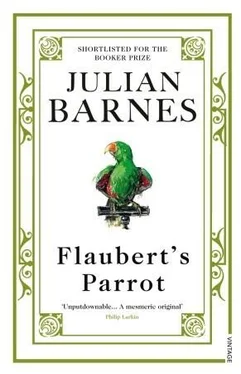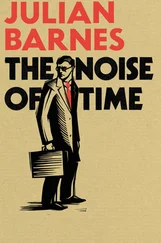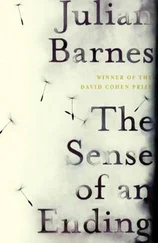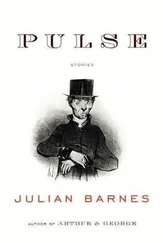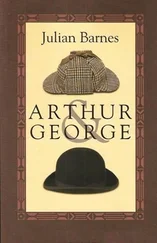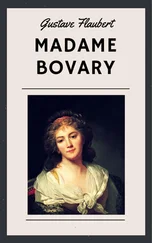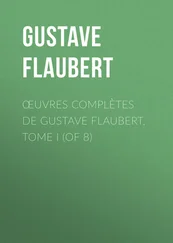Julian Barnes - Flaubert's Parrot
Здесь есть возможность читать онлайн «Julian Barnes - Flaubert's Parrot» весь текст электронной книги совершенно бесплатно (целиком полную версию без сокращений). В некоторых случаях можно слушать аудио, скачать через торрент в формате fb2 и присутствует краткое содержание. Город: New York, Год выпуска: 2011, ISBN: 2011, Издательство: Vintage International, Жанр: Современная проза, на английском языке. Описание произведения, (предисловие) а так же отзывы посетителей доступны на портале библиотеки ЛибКат.
- Название:Flaubert's Parrot
- Автор:
- Издательство:Vintage International
- Жанр:
- Год:2011
- Город:New York
- ISBN:9780307797858
- Рейтинг книги:4 / 5. Голосов: 1
-
Избранное:Добавить в избранное
- Отзывы:
-
Ваша оценка:
- 80
- 1
- 2
- 3
- 4
- 5
Flaubert's Parrot: краткое содержание, описание и аннотация
Предлагаем к чтению аннотацию, описание, краткое содержание или предисловие (зависит от того, что написал сам автор книги «Flaubert's Parrot»). Если вы не нашли необходимую информацию о книге — напишите в комментариях, мы постараемся отыскать её.
is by turns moving and entertaining, witty and scholarly, and a tour de force of seductive originality.
Flaubert's Parrot — читать онлайн бесплатно полную книгу (весь текст) целиком
Ниже представлен текст книги, разбитый по страницам. Система сохранения места последней прочитанной страницы, позволяет с удобством читать онлайн бесплатно книгу «Flaubert's Parrot», без необходимости каждый раз заново искать на чём Вы остановились. Поставьте закладку, и сможете в любой момент перейти на страницу, на которой закончили чтение.
Интервал:
Закладка:
No doubt Flaubert knew La Fontaine’s fable of the Bear and the Man Who Delighted in Gardens. There once was a bear, an ugly and deformed creature, who hid from the world and lived all alone in a wood. After a while he became melancholy and frantic – ‘for indeed, Reason seldom resides long among Anchorites’. So he set off and met a gardener, who had also lived a hermetic life, and also longed for company. The bear moved into the gardener’s hovel. The gardener had become a hermit because he could not abide fools; but since the bear spoke scarcely three words in the course of the day, he was able to get on with his work without disturbance. The bear used to go hunting, and bring home game for both of them. When the gardener went to sleep, the bear would sit beside him devotedly and chase away the flies that tried to settle on his face. One day, a fly landed on the tip of the man’s nose, and declined to be driven away. The bear became extremely angry with the fly, and eventually seized a huge stone and succeeded in killing it. Unfortunately, in the process he beat the gardener’s brains out.
Perhaps Louise Colet knew the story too.
If Gustave hadn’t been the Bear, he might have been the Camel. In January 1852 he writes to Louise and explains, yet again, his incorrigibility: he is as he is, he cannot change, he does not have a say in the matter, he is subject to the gravity of things, that gravity ‘which makes the polar bear inhabit the icy regions and the camel walk upon the sand’. Why the camel? Perhaps because it is a fine example of the Flaubertian grotesque: it cannot help being serious and comic at the same time. He reports from Cairo: ‘One of the finest things is the camel. I never tire of watching this strange beast that lurches like a turkey and sways its neck like a swan. Its cry is something I wear myself out trying to imitate – I hope to bring it back with me – but it’s hard to reproduce – a rattle with a kind of tremendous gargling as an accompaniment.’
The species also exhibited a character trait which was familiar to Gustave: ‘I am, in both my physical and my mental activity, like the dromedary, which it is very hard to get going and very hard, once it is going, to stop; continuity is what I need, whether of rest or of motion.’ This 1853 analogy, once it has got going, also proves hard to stop: it is still running in a letter to George Sand of 1868.
Chameau , camel, was slang for an old courtesan. I do not think this association would have put Flaubert off.
Flaubert loved fairs: the tumblers, the giantesses, the freaks, the dancing bears. In Marseilles he visited a quayside booth advertising ‘sheep-women’, who ran around while sailors tugged at their fleeces to see if they were real. This was not a high-class show: ‘nothing could be stupider or filthier’, he reported. He was far more impressed at the fair in Guérande, an old fortified town north-west of St Nazaire, which he visited during his walking tour of Brittany with Du Camp in 1847. A booth run by a sly peasant with a Picardy accent advertised ‘a young phenomenon’: it turned out to be a five-legged sheep with a tail in the shape of a trumpet. Flaubert was delighted, both with the freak and with its owner. He admired the beast rapturously; he took the owner out to dinner, assured him he would make a fortune, and advised him to write to King Louis Philippe on the matter. By the end of the evening, to Du Camp’s clear disapproval, they were calling one another tu .
‘The young phenomenon’ fascinated Flaubert, and became part of his teasing vocabulary. As he and Du Camp tramped along, he would introduce his friend to the trees and the bushes with mock gravity: ‘May I present the young phenomenon?’ At Brest, Gustave fell in with the sly Picard and his freak once again, dined and got drunk with him, and further praised the magnificence of his animal. He was often thus overcome by frivolous manias; Du Camp waited for this one to run its course like a fever.
The following year, in Paris, Du Camp was ill, and confined to bed in his apartment. At four o’clock one afternoon he heard a commotion on the landing outside, and his door was flung open. Gustave strode in, followed by the five-legged sheep and the showman in the blue blouse. Some fair at the Invalides or the Champs-Elysées had disgorged them, and Flaubert was eager to share their rediscovery with his friend. Du Camp drily notes that the sheep ‘did not conduct itself well’. Nor did Gustave – shouting for wine, leading the animal round the room and bellowing its virtues: ‘The young phenomenon is three years old, has passed the Académie de Médecine, and has been honoured by visits from several crowned heads, etc.’ After a quarter of an hour the sick Du Camp had had enough. ‘I dismissed the sheep and its proprietor, and had my room swept.’
But the sheep had left its droppings in Flaubert’s memory as well. A year before his death he was still reminding Du Camp about his surprise arrival with the young phenomenon, and still laughing as much as the day it had happened.
A week ago I saw a monkey in the street jump on a donkey and try to wank him off – the donkey brayed and kicked, the monkey’s owner shouted, the monkey itself squealed – apart from two or three children who laughed and me who found it very funny, no one paid any attention. When I described this to M. Bellin, the secretary at the consulate, he told me of having seen an ostrich trying to rape a donkey. Max had himself wanked off the other day in a deserted section among some ruins and said it was very good.
Letter to Louis Bouilhet, Cairo, January 15th, 1850Parrots are human to begin with; etymologically, that is. Perroquet is a diminutive of Pierrot ; parrot comes from Pierre ; Spanish perico derives from Pedro . For the Greeks, their ability to speak was an item in the philosophical debate over the differences between man and the animals. Aelian reports that ‘the Brahmins honour them above all other birds. And they add that it is only reasonable to do so; for the parrot alone can give a good imitation of the human voice.’ Aristotle and Pliny note that the bird is extremely lecherous when drunk. More pertinently, Buffon observes that it is prone to epilepsy. Flaubert knew of this fraternal weakness: the notes he took on parrots when researching Un cœur simple include a list of their maladies – gout, epilepsy, aphtha and throat ulcers.
To recapitulate. First there is Loulou, Félicité’s parrot. Then there are the two contending stuffed parrots, one at the Hôtel-Dieu and one at Croisset. Then there are the three live parrots, two at Trouville and one at Venice; plus the sick parakeet at Antibes. As a possible source for Loulou we can, I think, eliminate the mother of a ‘hideous’ English family encountered by Gustave on the boat from Alexandria to Cairo: with a green eyeshade attached to her bonnet, she looked ‘like a sick old parrot’.
Caroline, in her Souvenirs intimes , remarks that ‘Félicité and her parrot really lived’ and directs us towards the first Trouville parrot, that of Captain Barbey, as the true ancestor of Loulou. But this doesn’t answer the more important question: how, and when, did a simple (if magnificent) living bird of the 1830s get turned into a complicated, transcendent parrot of the 1870s? We probably shan’t ever find out; but we can suggest a point at which the transformation might have begun.
The second, uncompleted part of Bouvard et Pécuchet was to consist mainly of ‘La Copie’ , an enormous dossier of oddities, idiocies and self-condemning quotations, which the two clerks were solemnly to copy out for their own edification, and which Flaubert would reproduce with a more sardonic intent. Among the thousands of press cuttings he collected for possible inclusion in the dossier is the following story, clipped from L’Opinion nationale of June 20th, 1863:
Читать дальшеИнтервал:
Закладка:
Похожие книги на «Flaubert's Parrot»
Представляем Вашему вниманию похожие книги на «Flaubert's Parrot» списком для выбора. Мы отобрали схожую по названию и смыслу литературу в надежде предоставить читателям больше вариантов отыскать новые, интересные, ещё непрочитанные произведения.
Обсуждение, отзывы о книге «Flaubert's Parrot» и просто собственные мнения читателей. Оставьте ваши комментарии, напишите, что Вы думаете о произведении, его смысле или главных героях. Укажите что конкретно понравилось, а что нет, и почему Вы так считаете.
